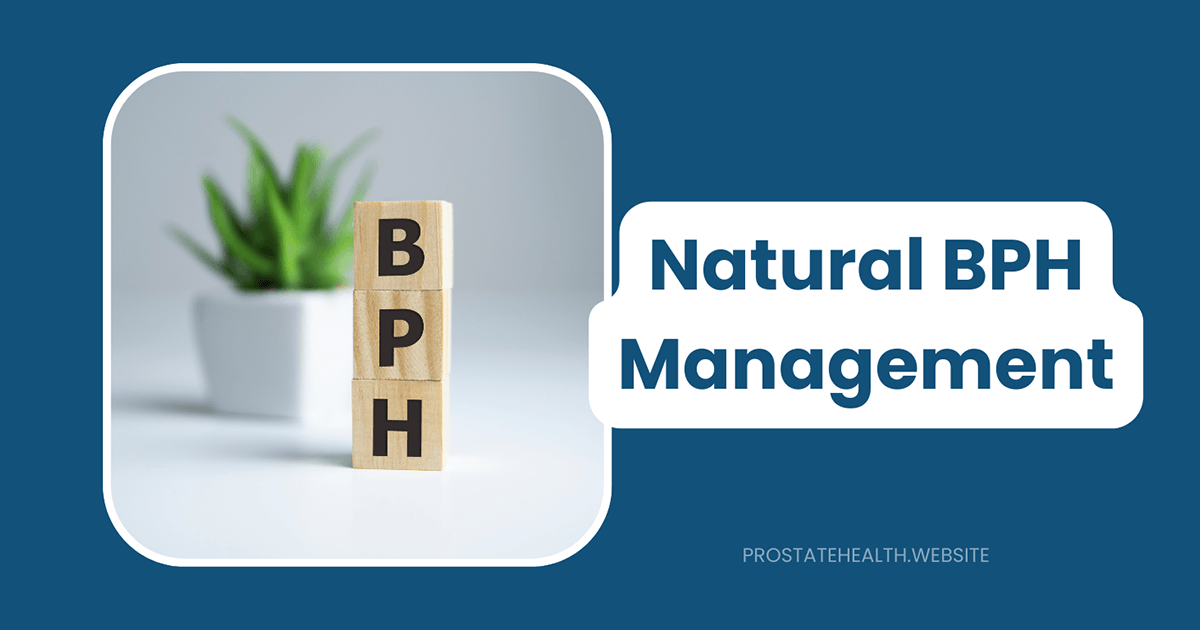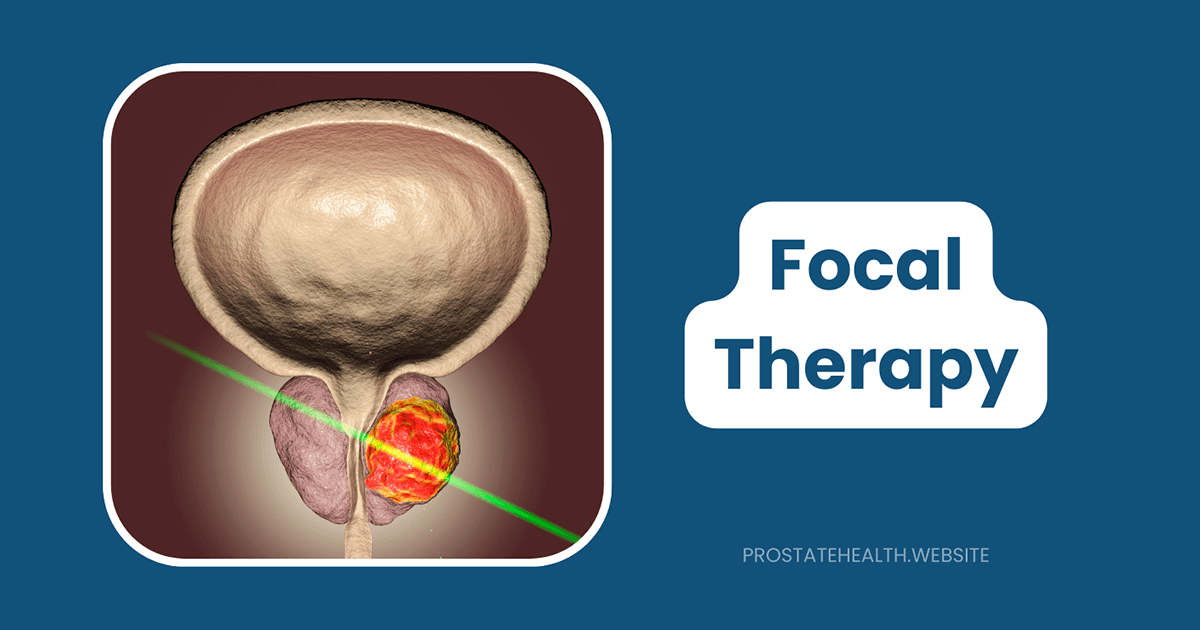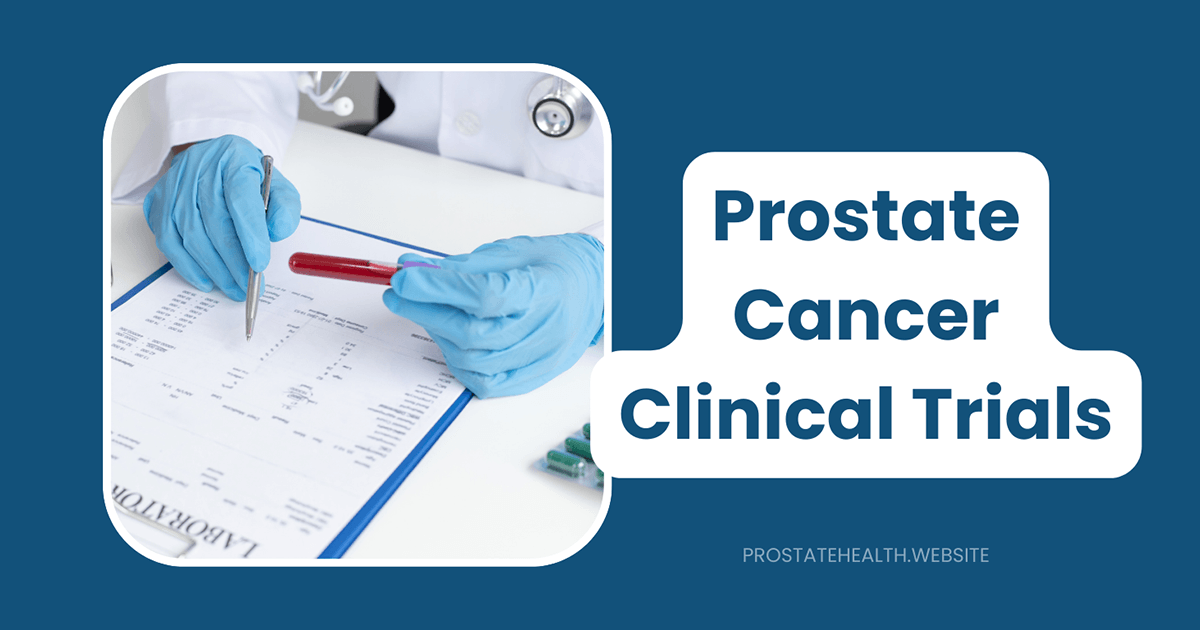Natural Approaches to Managing BPH Symptoms

If you’re one of the millions of men dealing with benign prostatic hyperplasia (BPH), you know how frustrating the symptoms can be—frequent urination, weak stream, nighttime bathroom trips, and the constant feeling that your bladder isn’t quite empty. While medications and surgical procedures are effective options, many men are interested in exploring natural approaches to manage their symptoms.
“Natural approaches can be valuable tools in the BPH management toolkit,” explains Dr. Robert Chen, urologist. “While they may not replace medical treatment for everyone, they can complement conventional therapies and, in some cases, provide sufficient relief for men with mild to moderate symptoms.”
This comprehensive guide explores evidence-based natural approaches to managing BPH symptoms, from herbal supplements to lifestyle modifications that can make a significant difference in your day-to-day comfort and quality of life.
Understanding BPH: The Basics
Before diving into natural management strategies, let’s understand what BPH is and who it affects.
Benign prostatic hyperplasia is a non-cancerous enlargement of the prostate gland that commonly affects men as they age. By age 60, about 50% of men experience symptoms, and by age 85, this number jumps to 90%. When the prostate enlarges, it can press against the urethra and bladder, causing urinary symptoms.
BPH is typically idiopathic, meaning there’s no single clear cause, but hormonal changes related to aging play a significant role. Specifically, changes in testosterone and dihydrotestosterone (DHT) levels contribute to prostate growth over time.
Herbal Supplements for BPH
Several herbal supplements have been studied for their potential benefits in managing BPH symptoms. Here’s what the research shows about the most popular options:
Saw Palmetto (Serenoa repens)
What it is: Extract from the berries of the saw palmetto tree, native to the southeastern United States.
How it may work: Saw palmetto appears to inhibit 5-alpha-reductase, the enzyme that converts testosterone to DHT, which stimulates prostate growth. It may also have anti-inflammatory and anti-androgenic effects.
Research evidence: Studies on saw palmetto show mixed results. Some smaller studies suggest benefits for urinary symptoms, while larger, more rigorous trials have found it no more effective than placebo. A 2020 systematic review concluded that saw palmetto might provide modest improvements in urinary symptoms and flow measures.
Typical dosage: 160-320 mg of standardized extract daily, containing 85-95% fatty acids and sterols.
Potential side effects: Generally well-tolerated with minimal side effects, which may include headache, dizziness, nausea, and constipation.
“I’ve been taking saw palmetto for about six months,” shares Michael, 62. “While it hasn’t eliminated my symptoms completely, I’ve noticed I’m getting up less at night, which has improved my sleep quality significantly.”
Beta-Sitosterol
What it is: A plant sterol found in many fruits, vegetables, nuts, and seeds.
How it may work: Beta-sitosterol appears to reduce inflammation and may inhibit prostaglandin production in the prostate.
Research evidence: Several studies have shown that beta-sitosterol can improve urinary symptoms and flow measures. A Cochrane review found that beta-sitosterol improved urinary symptom scores and peak urinary flow compared to placebo.
Typical dosage: 60-130 mg daily, divided into 2-3 doses.
Potential side effects: Generally well-tolerated, with occasional reports of digestive issues, nausea, or indigestion.
Pygeum (Pygeum africanum)
What it is: Extract from the bark of the African plum tree.
How it may work: Pygeum contains compounds that may reduce inflammation, modulate bladder contractility, and inhibit prostate growth factors.
Research evidence: A review of 18 randomized controlled trials found that pygeum improved urinary symptoms, reduced nighttime urination, and increased urine flow compared to placebo. However, many of these studies were small and of short duration.
Typical dosage: 100-200 mg of standardized extract daily.
Potential side effects: Generally well-tolerated, with occasional reports of gastrointestinal disturbances.
Rye Grass Pollen Extract (Cernilton)
What it is: Extract from rye grass pollen.
How it may work: May reduce prostate inflammation and inhibit prostate cell growth.
Research evidence: Some studies suggest that rye grass pollen extract can improve urinary symptoms, particularly in men with inflammatory prostate conditions. A systematic review found modest benefits for urinary symptoms compared to placebo.
Typical dosage: 126-378 mg daily.
Potential side effects: Generally well-tolerated, with rare reports of allergic reactions in people with pollen allergies.
Stinging Nettle Root (Urtica dioica)
What it is: Extract from the root of the stinging nettle plant.
How it may work: Contains compounds that may reduce inflammation and interact with sex hormone binding globulin (SHBG).
Research evidence: Some studies suggest that stinging nettle root can improve urinary symptoms and flow rates. It’s often used in combination with other herbs like saw palmetto.
Typical dosage: 120-600 mg of root extract daily.
Potential side effects: Generally well-tolerated, with occasional reports of mild digestive upset, fluid retention, or skin rash.
Other Promising Supplements
- Pumpkin seeds: Rich in zinc and plant sterols, which may support prostate health
- Lycopene: An antioxidant found in tomatoes and other red fruits that may help reduce prostate inflammation
- Zinc: May help reduce DHT production and binding to receptors
- Cranberry: May inhibit 5-alpha-reductase and help with urinary symptoms
Dietary Approaches for BPH Management
What you eat can have a significant impact on prostate health and BPH symptoms. Research suggests that certain dietary patterns and specific foods may help manage symptoms and potentially slow prostate growth.
Foods That May Help
1. Fruits and Vegetables
- Tomatoes and red fruits: Rich in lycopene, which may help reduce prostate inflammation and growth
- Cruciferous vegetables: Broccoli, cauliflower, cabbage, and Brussels sprouts contain sulforaphane, which may help protect against prostate enlargement
- Berries: High in antioxidants that help combat inflammation
- Citrus fruits: Rich in vitamin C and antioxidants that support overall prostate health
2. Healthy Fats
- Fatty fish: Salmon, mackerel, sardines, and trout are high in omega-3 fatty acids, which help reduce inflammation
- Nuts and seeds: Particularly walnuts, flaxseeds, and sesame seeds, which contain beneficial plant sterols and essential fatty acids
- Olive oil: Contains polyphenols with anti-inflammatory properties
3. Plant Proteins
- Soy: Contains isoflavones that may help inhibit 5-alpha-reductase
- Legumes: Beans, lentils, and peas provide plant protein without the potential inflammatory effects of red meat
4. Whole Grains
- Brown rice, quinoa, oats, and other whole grains provide fiber and nutrients without the inflammatory potential of refined grains
Foods to Limit or Avoid
1. Red and Processed Meats
- May increase inflammation and potentially worsen BPH symptoms
2. Dairy Products
- Some studies suggest high dairy consumption may be associated with increased BPH risk
3. Caffeine and Alcohol
- Act as diuretics and bladder irritants, potentially worsening urinary frequency and urgency
- May be particularly problematic when consumed in the evening
4. Spicy Foods
- Can irritate the bladder and potentially worsen urinary symptoms
5. Sodium
- High sodium intake can increase urinary tract symptoms and fluid retention
Dietary Pattern Recommendations
Research suggests that Mediterranean-style eating patterns may be beneficial for prostate health. This approach emphasizes:
- Abundant fruits and vegetables
- Whole grains
- Healthy fats from olive oil, nuts, and fish
- Limited red meat
- Moderate alcohol consumption
“Changing my diet was one of the most effective things I did for my BPH symptoms,” shares James, 58. “After reducing red meat and increasing my intake of vegetables and fish, I noticed a significant improvement in my symptoms within a few weeks.”
Lifestyle Modifications for BPH Relief
Beyond supplements and diet, several lifestyle modifications can help manage BPH symptoms effectively:
1. Physical Activity and Exercise
Regular physical activity has been shown to reduce BPH symptoms and may help prevent progression. Aim for:
- At least 30 minutes of moderate exercise most days of the week
- A combination of aerobic activity, strength training, and flexibility exercises
- Activities that don’t put excessive pressure on the pelvic floor (walking, swimming, cycling on a properly fitted bike)
Research suggests that sedentary men have a higher risk of BPH progression compared to physically active men.
2. Pelvic Floor Exercises
Strengthening the pelvic floor muscles can improve bladder control and reduce symptoms like urgency and frequency:
Basic Kegel Exercise Technique:
- Identify the correct muscles by stopping urination midstream (only do this for identification, not as regular practice)
- Tighten these muscles, hold for 5 seconds, then relax for 5 seconds
- Repeat 10 times, 3 times daily
- Gradually increase the hold time to 10 seconds
“Pelvic floor exercises made a noticeable difference in my ability to control urinary urgency,” reports Robert, 65. “It took about a month of consistent practice before I noticed improvements, but it was worth the effort.”
3. Bladder Training and Urinary Habits
Modifying your bathroom habits can significantly improve symptoms:
- Double voiding: After urinating, wait a moment and try again to ensure complete bladder emptying
- Scheduled voiding: Urinate at regular intervals rather than waiting until urgency occurs
- Avoid “just in case” urination: Only go when you actually need to, to avoid training your bladder to signal at smaller volumes
- Take your time: Don’t rush urination; allow for complete emptying
- Limit evening fluids: Reduce fluid intake in the 2-3 hours before bedtime to minimize nighttime urination
4. Stress Management
Stress and anxiety can worsen urinary symptoms by increasing muscle tension in the pelvic area and bladder:
- Meditation and mindfulness: Even 10-15 minutes daily can help reduce stress
- Deep breathing exercises: Practice diaphragmatic breathing several times daily
- Yoga: Combines physical activity with stress reduction
- Progressive muscle relaxation: Systematically tensing and relaxing muscle groups
5. Weight Management
Maintaining a healthy weight is important for prostate health:
- Obesity is associated with increased risk of BPH and more severe symptoms
- Even modest weight loss can improve urinary symptoms in overweight men
- Focus on sustainable approaches combining healthy eating and regular physical activity
6. Fluid Management
Smart fluid management can help control symptoms:
- Stay hydrated: Drink enough water throughout the day (about 2 liters total)
- Timing matters: Drink more in the morning and afternoon, less in the evening
- Sip, don’t gulp: Drinking large amounts quickly can trigger urgency
- Limit bladder irritants: Reduce caffeine, alcohol, and artificially sweetened beverages
Putting It All Together: Creating Your Natural BPH Management Plan
The most effective approach to naturally managing BPH typically combines multiple strategies tailored to your specific symptoms and preferences. Here’s a framework for developing your personal plan:
Step 1: Assess Your Symptoms
Before starting any natural approach, understand your baseline:
- Track urinary frequency, urgency, and nighttime urination for a week
- Note symptom severity and impact on quality of life
- Consider using the International Prostate Symptom Score (IPSS) questionnaire for objective measurement
Step 2: Consult Healthcare Providers
Always discuss natural approaches with your healthcare team:
- Review your current medications for potential interactions
- Discuss whether natural approaches are appropriate for your symptom severity
- Consider whether complementary approaches alongside conventional treatment are right for you
Step 3: Start with Lifestyle Modifications
These changes are generally safe and beneficial for overall health:
- Implement dietary changes gradually
- Establish a consistent exercise routine
- Practice pelvic floor exercises daily
- Adopt bladder training techniques
- Manage stress through mindfulness practices
Step 4: Consider Evidence-Based Supplements
If appropriate for your situation:
- Choose supplements with the strongest evidence base
- Start with standard dosages
- Give supplements adequate time to work (typically 4-8 weeks)
- Monitor for improvements and any side effects
Step 5: Track Your Progress
Keep a record of changes in your symptoms:
- Update your symptom diary regularly
- Reassess using the IPSS questionnaire after 1-3 months
- Note improvements in specific symptoms (frequency, urgency, stream strength)
Step 6: Adjust as Needed
Be prepared to modify your approach:
- If one supplement doesn’t help, consider trying another
- Combine approaches for potentially greater benefit
- If symptoms worsen or don’t improve, consult your healthcare provider about medical treatments
Important Considerations and Precautions
While natural approaches can be beneficial, they come with important considerations:
Quality and Standardization
Herbal supplements aren’t regulated as strictly as medications:
- Choose products from reputable manufacturers
- Look for standardized extracts with specified active ingredient content
- Consider products that have undergone third-party testing (USP, NSF, or ConsumerLab verification)
Potential Interactions
Many natural supplements can interact with medications:
- Blood thinners: Saw palmetto, pygeum, and other herbs may increase bleeding risk
- Blood pressure medications: Some supplements may enhance blood pressure-lowering effects
- Hormone-sensitive conditions: Herbs with hormonal effects may impact conditions like prostate cancer
When to Seek Medical Care
Natural approaches aren’t appropriate for all situations. See your doctor if you experience:
- Sudden inability to urinate (acute retention)
- Blood in urine
- Pain during urination
- Fever or chills
- Significant worsening of symptoms
- Minimal improvement after 3 months of natural approaches
Special Populations
Some men should be particularly cautious with natural approaches:
- Men with prostate cancer: Some supplements may affect hormone levels
- Men preparing for surgery: Many supplements should be discontinued 2-3 weeks before procedures
- Men with liver or kidney disease: May process supplements differently
The Future of Natural BPH Management
Research into natural approaches for BPH continues to evolve. Some promising areas include:
- Combination herbal formulations: Products combining multiple herbs may offer synergistic benefits
- Personalized approaches: Genetic testing may help identify which men are most likely to benefit from specific natural interventions
- Novel plant compounds: Researchers continue to identify and study new plant-derived molecules with potential benefits for prostate health
- Integration with conventional care: More healthcare providers are adopting integrative approaches that combine the best of conventional and natural therapies
Conclusion: A Holistic Approach to BPH Management
Managing BPH naturally requires a holistic approach that addresses multiple aspects of prostate and urinary health. By combining evidence-based supplements with dietary changes, regular physical activity, pelvic floor exercises, and stress management techniques, many men can achieve significant improvement in their symptoms and quality of life.
Remember that natural approaches can be used either as standalone strategies for mild symptoms or as complementary therapies alongside conventional treatments for more severe cases. The key is working closely with your healthcare providers to find the right combination for your specific situation.
With patience, consistency, and a willingness to try different approaches, you can take an active role in managing your BPH symptoms naturally and maintaining your prostate health for years to come.
Frequently Asked Questions
Most herbal supplements take 4-8 weeks to show benefits, while lifestyle modifications like exercise and diet changes may take 1-3 months to significantly impact symptoms. If you don’t notice any improvement after 3 months, consult your healthcare provider about other options.
While many men do combine supplements, it’s best to start with one at a time to assess effectiveness and monitor for side effects. Always consult your healthcare provider before combining supplements, especially if you take prescription medications.
Most natural approaches focus on symptom management rather than actually shrinking the prostate. Some, like 5-alpha-reductase inhibitors (finasteride, dutasteride), can reduce prostate size, but most herbal supplements work through other mechanisms like reducing inflammation or improving bladder function.
Never discontinue prescription medications without consulting your healthcare provider. In some cases, if natural approaches provide sufficient relief, your doctor may support reducing or discontinuing medications, but this should always be done under medical supervision.
Coverage varies widely. Some insurance plans offer limited coverage for certain supplements or complementary therapies, particularly with a doctor’s recommendation. Health savings accounts (HSAs) and flexible spending accounts (FSAs) often can be used for supplements when they’re recommended by a healthcare provider for a specific medical condition.
External Resources:
- American Urological Association – BPH Guidelines
- National Center for Complementary and Integrative Health – Saw Palmetto
- National Institute of Diabetes and Digestive and Kidney Diseases – Prostate Enlargement






